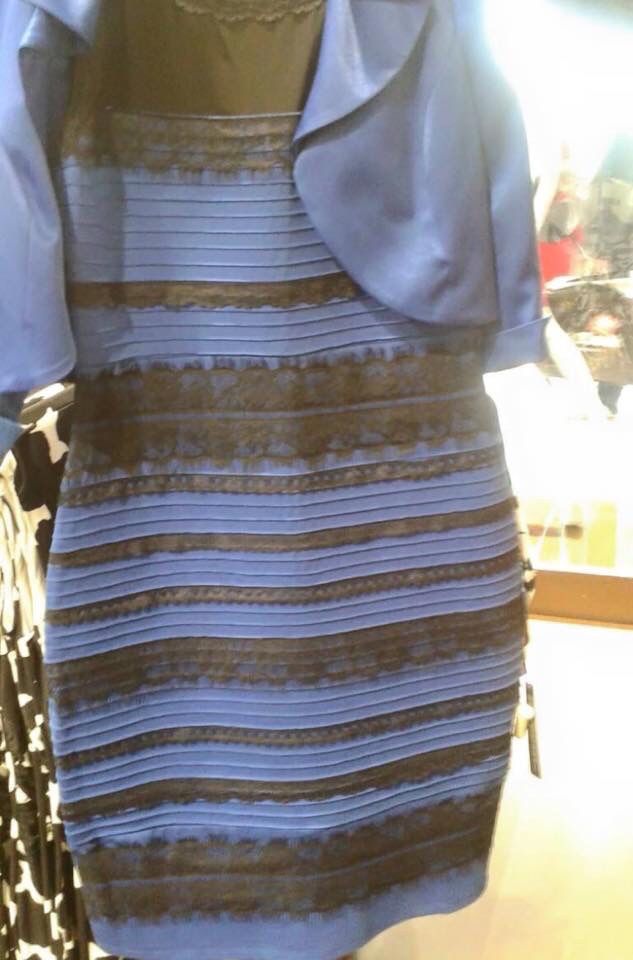White & Gold or Blue & Black? Science of the Mystery Dress

The Internet went bonkers last night over a simple question posed on the social networking site Tumblr: What color is this dress?
Some people see the dress as white and gold, while others swear it's blue and black. Some people even flip between the two, or see some combination. Even Taylor Swift and Kanye West weighed in. (For the record, the dress really is blue and black.)
What’s going on? [Eye Tricks: Gallery of Visual Illusions]
David Williams, a vision scientist at the University of Rochester in New York, has a theory.
Light is made up of different wavelengths, which the brain perceives as color. Light entering the retina, the light-sensitive part of the eye, activates cone cells that are sensitive to either red, green or blue wavelengths. But the wavelengths your eye detects may not be the wavelengths of the object you're looking at.
"Your brain is always confronted with a problem," Williams told Live Science. When you look at an object, the light your eyes see from the object depends on two things: how the object is illuminated, he said, and the intrinsic properties of the object. "So your brain is always working behind the scenes to figure out what the true color of the object is," he said.
The illumination can change dramatically depending on the time of day, or between incandescent and fluorescent lighting. Yet in spite of this, the brain almost always identifies an object's true color correctly.
Sign up for the Live Science daily newsletter now
Get the world’s most fascinating discoveries delivered straight to your inbox.
In the case of the dress, the reason some people see it as different colors is not because they're colorblind, which is usually caused by a defect in a person's color cones, nor is it some fundamental difference in color vision, Williams said. "I think the brain has just made a different assumption about how the dress is being illuminated."
For example, if your brain assumes the lighting on the dress is very dim, it will assume the dress itself is highly reflective, or white and gold, Williams said. But if your brain assumes the opposite (that the lighting is very bright), it then makes the judgment that the dress itself must be darker, hence blue and black.
So why don't we encounter these color differences in everyday life?
In real life, the dress would be in a large field of view, with other objects illuminated in the same way. Our brains would be able to separate the garment's lighting from its intrinsic color, Williams said. "It's all about the context," he noted.
In the photo posted on Tumblr, the dress fills up most of the image, providing very little information about how the object is being lit. "The wide range of interpretations about how it's being illuminated leads to a wide range of interpretations about its intrinsic color," Williams said.
But that still doesn't explain why some people's brains assume the lighting is one way and some assume the opposite. Williams himself (and, for that matter, this reporter) sees the dress as white and gold.
Scientists have done experiments in which they take a gray square and make it look white or black depending on the context. Other tests have taken a chocolate bar and made it look orange.
The dress is "a great example of the many optical illusions out there that illustrate how the brain, behind the scenes, is making all these decisions," Williams said. The world as it is arriving at your eyes is incredibly ambiguous, and it's only through the brain that we can figure out what's really out there, he said.
Follow Tanya Lewis on Twitter. Follow us @livescience, Facebook & Google+. Original article on Live Science.











